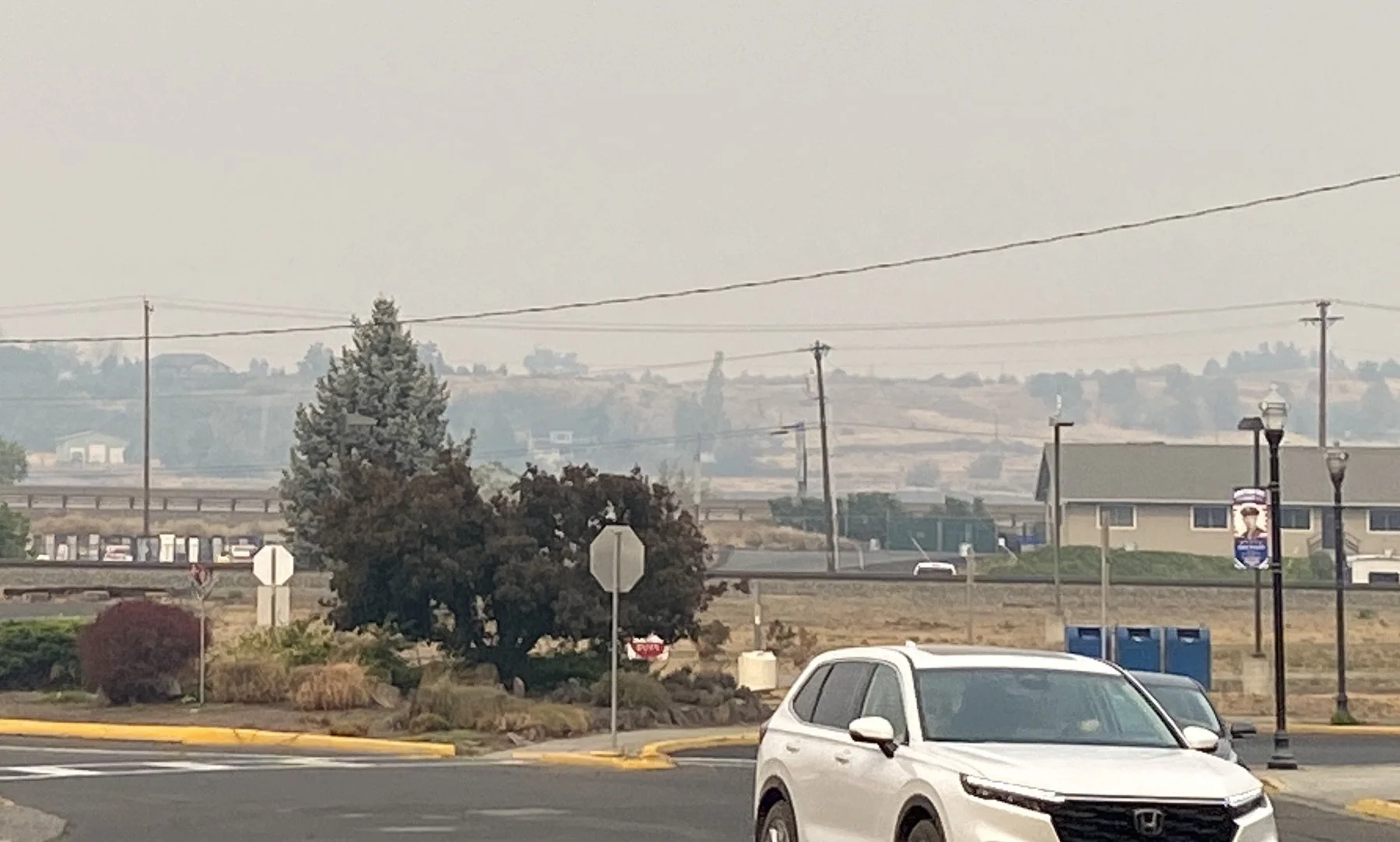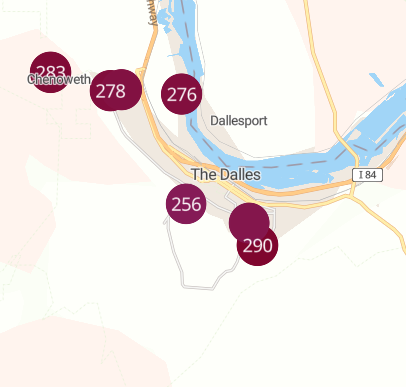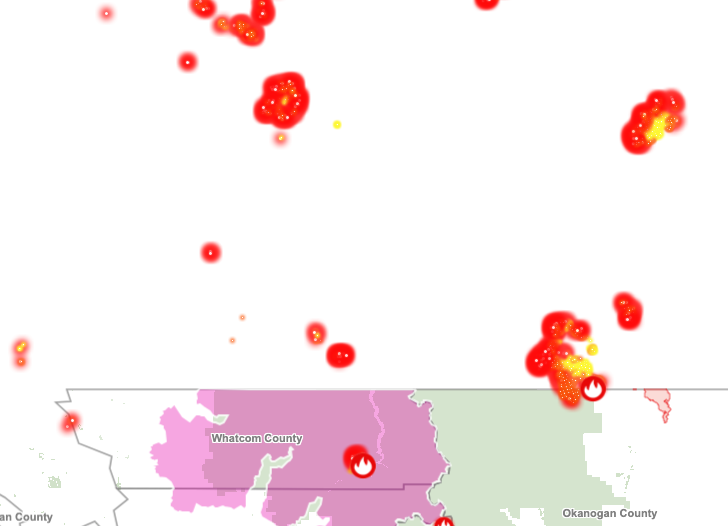New Air Quality Monitors in TD give 'Very Unhealthy' rating with smoke from wildfires
Dallesport is obscured as smoke from Washington and Canada continues to cover the the Mid-Columbia today, Aug. 20
This screen shot showing AQI ratings from schools in The Dalles is live. Click here to see real time ratings.
By Tom Peterson
The Dalles, Ore., Aug. 20, 2023 - Air quality monitors are showing a “very unhealthy” rating, according to local monitors that were recently installed on school buildings in The Dalles.
The Air Quality Index is currently showing 290 in The Dalles as smoke from fires in Washington and Canada continues to obscure local skies.
Particulate matter in the air can be dangerous to those that have difficulty breathing due to asthma or other lung diseases or heart conditions.
Forecasters are calling for winds to hit 16 mph out of the northwest on Monday, Aug. 21 as smoke continues to remain in the area. The wind trend is expected to continue Tuesday, Aug. 22 with an equally strong air current with the possibility of clearing skies.
This satellite map of wildfires found on the CCCNews website shows how intense the burning is in British Columbia north of the border of Washington.
What is the U.S. Air Quality Index (AQI)?
The U.S. AQI is EPA’s index for reporting air quality.
How does the AQI work?
Think of the AQI as a yardstick that runs from 0 to 500. The higher the AQI value, the greater the level of air pollution and the greater the health concern. For example, an AQI value of 50 or below represents good air quality, while an AQI value over 300 represents hazardous air quality.
The AQI is divided into six categories. Each category corresponds to a different level of health concern. Each category also has a specific color. The color makes it easy for people to quickly determine whether air quality is reaching unhealthy levels in their communities.
Click to enlarge this gauge for air quality based on AQI ratings.
D21/ OSU Extension partner on air monitors
From North Wasco County School District:
By Stephanie Bowen
Thanks to a collaboration with Oregon State University Extension Service, all North Wasco County Schools are now equipped with outdoor air quality monitors. Air quality levels from these monitors, and other local sites, can be found at: map.purpleair.com/ or fire.airnow.gov, a website maintained by the United States Environmental Protection Agency (EPA), or on the district facilities webpage.
These monitors are an added measure the district is taking to improve environmental health in our schools. During wildfires or other smoke events, district staff will use these monitors to check air quality levels (AQI) around the district and communicate accurate and timely information to families. In some circumstances, we may change or cancel activities in response to hazardous AQI levels and to protect the health of our students and staff. The monitors detect particulate matter in the air between 0.3μm and 10μm in diameter. Data from the monitors is updated every two minutes.
Particulate Matter (PM) 2.5 is dangerous to breathe because the particles are so small they can be inhaled deeply into the lungs and even enter the bloodstream. AQI Levels over 100 can be dangerous to young children, especially those with asthma or other lung diseases, heart conditions, diabetes, and other sensitivities to air pollution.
When levels reach 150 or greater, all outdoor activities across the district will be canceled or moved to an area with a lower AQI. Given the random behavior of wind and air currents, air quality may change quickly. While we do our best to communicate with families in a timely manner, some changes, particularly those with athletics, may be made with little warning.
The possibility of closing schools due to smoke is a complex decision and not one that we take lightly. We typically do not consider closing a school unless the air quality index reaches 200, a level deemed "very unhealthy". To learn more about how to protect yourself and your family from wildfire smoke, visit: beav.es/SmokeReady
If your organization is interested in hosting an air quality monitor, please contact Lauren.Kraemer@oregonstate.edu to learn more.
For additional guidance check out: OSAA: click here or here.



